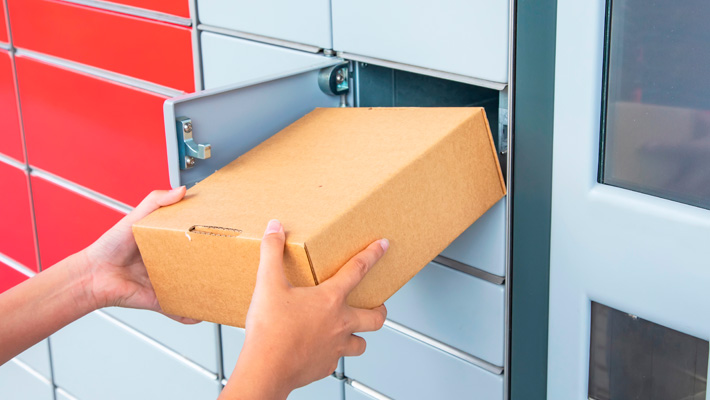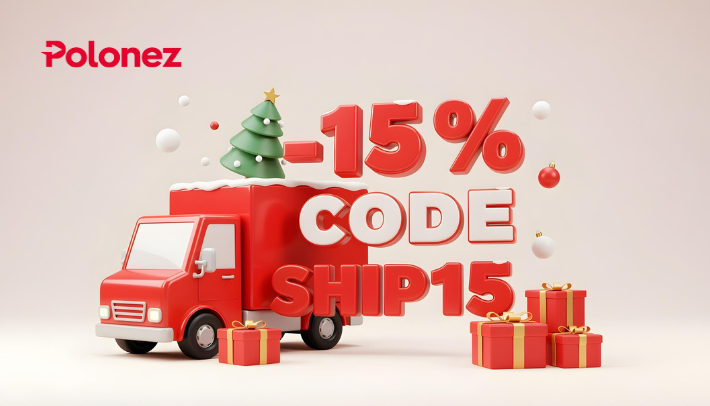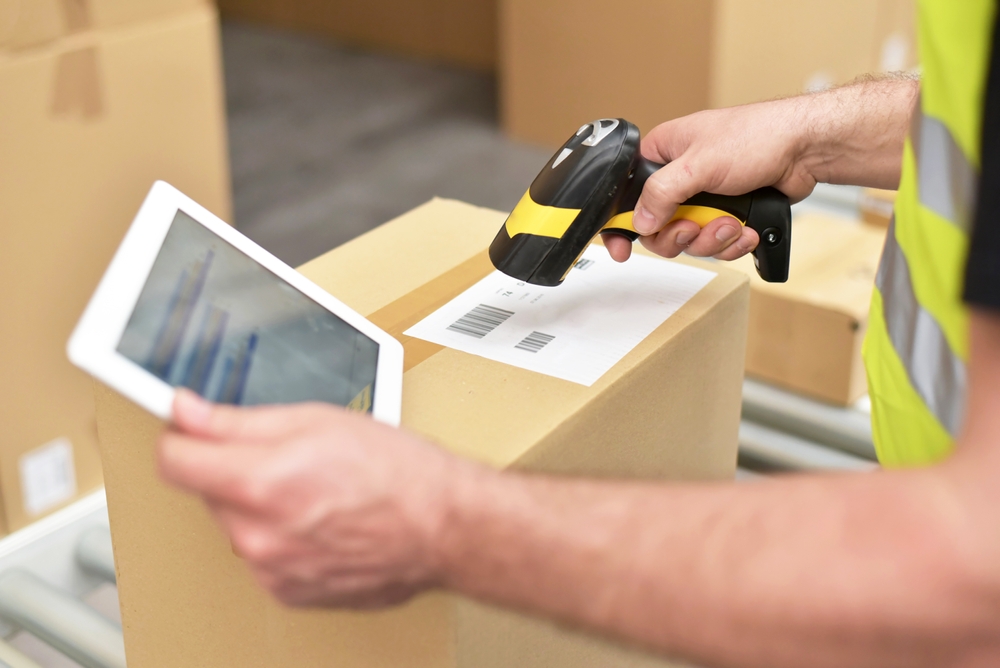Aug 18, 2025
Shopping Habits, Lockers, and Delivery Service to Poland

The age of efficient, cost-effective delivery service to Poland has exploded over the past decade. While streets may slow down on Sundays, web shops never close.
Poles love sitting on the couch with phone in hand, finding deals that beat anything at the mall. Online stores stock everything from local foods to international gadgets, and the sheer variety attracts those who want something special or new.
For better prices and wild promotions, more Poles are turning to e-shops. Nearly eight out of 10 internet users now buy online, and four out of ten even make their purchases straight from a smartphone.
Shopping habits have changed for good, especially after people had to stay home during the COVID-19 pandemic. For many, digital shopping now feels as normal as a walk to the corner store.
Preferences, Lockers, and Delivery Service to Poland
When utilizing a delivery service to Poland, consumers usually have access to parcel lockers. In fact, up to 90 percent of shoppers choose lockers over home delivery in Poland during much of the calendar year. This is a preference that consolidated shippers and courier services simply can't ignore.
Payment habits are also changing rapidly in Poland. Quick bank transfers are now everywhere, with the BLIK mobile system dominating the market. About 68 percent of people reach for their phones instead of cash. With 82 percent of shoppers abandoning their carts when they can't pay the way they want, it's clear that offering the right payment options is important.
For most Poles, online shopping is a regular habit. Last year alone, people spent an average of 870 euros online, typically buying something two or three times a month.
The convenience of 24/7 access means late-night shopping is a huge draw, especially with Sunday shopping bans in place for regular stores. Discounts are also a major factor, as shoppers often hunt for the best price before making a purchase.
“Over 60% admit that discounts are their main motivation for making a purchase,” state Expand ECO. “A wider selection of goods online and convenient, unlimited browsing options without time pressure” are key elements of this trend.
Shipping Options: Finding Your Perfect Balance
When tying into the benefits of an established delivery service to Poland, you have plenty of options.
“For Polish consumers, the top reason for shopping online is convenience, cited by 78.5 percent of respondents,” according to Warsaw Business Journal. “This trend is mirrored across Europe, including Spain (72 percent), Italy (64 percent), France (53 percent), and Hungary (51 percent).”
For speed, services like UPS Worldwide Saver, FedEx Priority, and DHL Express deliver in just 2 - 6 business days but can be quite expensive. Sending a 1-pound box with DHL Express can sometimes start at around $35.
If you need to save money without a long wait, options like UPS Expedited, FedEx Economy, and USPS Priority Mail Express International take 4 to 10 business days, which many find to be a reasonable compromise. The cheapest way to ship is often by sea with services like Meest Economy Sea, which can take 15 to 25 days but may cost as little as $24.
One thing that often catches people off guard is dimensional weight. A large box filled with light items, like a shoebox full of air, can cost more to ship than a small, heavy book. Since prices increase with bigger boxes even if they feel light, it pays to choose the right box and measure it carefully before sealing your shipment to help cut down on expenses.
Delivery Service to Poland: A Smart Shopper’s Guide
The following table explains different ways to ship packages from the United States through a delivery service to Poland. It outlines the pros and cons of each choice so you can pick the one that fits your budget and timeline.
Traditional couriers can get your parcel there quickly but might cost more, while parcel forwarding services offer more flexibility. Some people even use a combination of several shipping methods to find the best deals.
|
Shipping Model |
Pros |
Cons |
Best For |
|
Traditional Courier Services |
Fastest transit times (2-10 business days) Reliable tracking and insurance Wide range of service options (express, economy) |
Most expensive, especially for express services Costs can increase significantly with dimensional weight May not offer last-mile delivery to preferred options like parcel lockers |
Time-sensitive and high-value shipments (electronics, important documents) |
|
Parcel Forwarding and Consolidation |
Significant cost savings by combining multiple orders (up to 80% savings claimed) Access to U.S. retailers that do not ship internationally Customer controls consolidation process |
Requires an extra step in the shipping process Dependence on a third-party service provider Due diligence is needed to vet reputable forwarders |
Consumers making multiple purchases from different U.S. retailers who want to save on shipping |
|
Sea Freight to European Hubs |
Can be more reliable and efficient for high-volume freight Leverages Poland's modern road and rail networks for the final leg Avoids reliance on smaller feeder vessels to Polish ports |
Longer transit times compared to air freight Higher complexity and logistical coordination required Less suitable for small, individual parcels |
Businesses shipping large volumes of goods or those engaged in B2B supply chains |
“Using parcel lockers for the delivery of goods is very popular in Poland,” states Ecommerce News. “InPost has more than 25,000 parcel lockers across the country. In 2024, the company handled over one billion parcels, which was 22 percent more than the year before.”
Parcel Forwarding, Consolidation, and a Paradigm Shift
Parcel forwarding and consolidation delivery service to Poland have both recently become a popular option for shoppers who want to buy from U.S. retailers that either refuse to ship abroad or charge too much.
By signing up online, you get your own U.S. warehouse address, such as one in Port Reading, New Jersey. You can have all your purchases from any U.S. store shipped.
Once your packages arrive at the warehouse, you can combine them into one larger box, a trick that can dramatically cut costs. Some companies claim savings of up to 80 percent.
A consolidated shipping company handles the rest, dealing with shipping, customs, and getting your items directly to your door in Poland. It’s a service appealing to many Polish customers seeking more choices and better deals.
Major shifts are underway in the international shipping industry. Revisions to customs and duty regulations have introduced new costs for certain goods that were previously exempt, impacting a wide range of consumers and sellers.
At the same time, some postal services have temporarily halted international shipments, causing disruptions in supply chains and requiring businesses and individuals to find new ways to send and receive goods. These changes are reshaping the global movement of products and influencing the broader e-commerce environment.
Consolidated shippers are on top of all the recent trends, helping you figure out the best way to move forward for your situation – whether you’re a routine consumer, impromptu online shopper, or a small business owner.
Recommendations for Consumers and Businesses
Finding a great delivery service to Poland requires more than just picking the cheapest option. Since people expect packages to arrive fast and in one piece, it makes sense to choose an established company for expensive or urgent deliveries. Although these carriers charge more, you get better tracking, insurance, and real help if something goes wrong.
If you're buying a bunch of items from different U.S. stores, parcel forwarders could save you money by combining packages before sending them overseas. Before you use a parcel forwarder, it's wise to read up on the company, searching for recent reviews — not just what's on their site. Keep an eye out for any potential problems.
The total cost can be sneaky, as shipping isn't just the sticker price. You also need to remember to add customs fees and Poland’s Value Added Tax (VAT), which is 23 percent. Customs calculates these using the CIF formula: the item’s value, shipping, and then taxes and duties are added on top.
For companies, last-mile delivery in Poland presents a unique challenge, as it looks nothing like the United States. Since people often prefer Paczkomat lockers over home delivery, ignoring this preference can lead to shoppers abandoning their carts. To avoid this, it's important to partner with a logistics company or consolidated shipper that works well with this locker model.
Customs paperwork can feel like learning a new language, especially with unforgiving HS and TARIC codes. To avoid expensive mistakes, you should bring in a customs broker or use a digital paperwork platform.
If you're moving bulk freight, you should think bigger. It can sometimes be faster or cheaper to send everything to a main European port like Hamburg first, then move the goods by truck or train on Poland’s efficient network. Poland’s position as a European logistics crossroads can be a real advantage if you plan the right way.
Delivery Service to Poland is an EU Success Story
Joining the European Union in 2004 changed everything for delivery service to Poland, as trade barriers vanished and trucks and trains moved faster across borders.
With billions of euros in EU cash and government spending, old roads were fixed and new highways were built. One example is the S1, which received over €700 million from European funds alone and can cut travel times by almost half.
Other major routes like Via Carpatia and Via Baltica also came to life, connecting Poland with its neighbors in every direction. While most ocean cargo lands at massive harbors in Germany or the Netherlands because smaller Polish ports can’t handle ships that size, containers now travel quickly into Poland by truck using the upgraded roads without extra customs checks.
This system has made Poland a giant sorting hub. For instance, goods from the United States that land in Rotterdam can now reach Polish shelves just as fast, which is both quicker and easier than sending small ships to Poland’s own ports.
This efficiency has made Poland a key point for moving goods into Europe, and the improvements are noticeable to everyone, from parents whose kids’ online shopping arrives sooner to local businesses that rely on shipments not getting stuck at old checkpoints for days. Drivers, who remember the endless potholes and lines, now experience smooth and quick trips.
It’s all a testament to the changes that began with Poland’s historic decision to join the EU.
The Nearshoring Phenomenon and Poland’s Strategic Role
Nearshoring has put delivery service to Poland in the spotlight as companies move production closer to their customers. Poland’s central location in Europe, combined with new highways and rail lines, makes moving goods faster, and the local workforce offers real skill.
Warehouse space is also in high demand, with usage shooting up by 110 percent in 2024. Big logistics, warehousing, and online retail names have been popping up across the country to tap into Poland’s links and serve nearby regions.
Large logistics projects have benefits that ripple outwards, even to U.S. businesses that ship just a few packages each week. This makes for lower costs and faster deliveries, while technology from global players trickles down to smaller companies.
These changes create both challenges and opportunities. While Polish e-commerce is booming, shipping from abroad still feels scattered and tricky, and there is now more to consider than just price. Customer habits, politics, and customs rules all shape the picture.
Getting shipments from point A to point B is no longer a simple task, as one-size-fits-all solutions fall short. Each business needs to think carefully and stay agile – as well as consumers and households.
Polonez America
Polonez America specializes in international shipments from the United States to 43 European countries and specifically delivery service to Poland. We offer parcel shipment via ocean or air, vehicle shipment, commercial LCL (Less than Container Load) and FCL (Full Container Load) shipping.
Our comprehensive range of services means customers can initiate package or commercial shipments from any of Polonez's authorized shipping outlets within the United States, which are then transported to our headquarters for sorting. Customers can send packages from authorized shipping outlets in the United States or by sending them via UPS, FedEx, or U.S. Postal Service to Polonez America's headquarters in Port Reading, NJ.
Polonez America is your expert in the resettlement process, collaborating with European partners for parcel services, customs, and delivery within Poland and other countries. We earn client trust through integrity and professionalism by delivering the highest quality service at the most competitive price.
Recommended to you

News
Dec 2, 2025
Don’t Miss Christmas Delivery!
CHRISTMAS IS JUST AROUND THE CORNER. There’s still time to send your holiday parcels to Poland — but the shipping deadlines are approaching quickly!

News
Dec 1, 2025
15% OFF Online Shipments
December Holiday Promo

News
Nov 24, 2025
How the Middle Warehouse Ensures Quick Delivery to Poland
U.S. online shops are reaching more buyers in Europe every year thanks to quick delivery to Poland and other countries.




